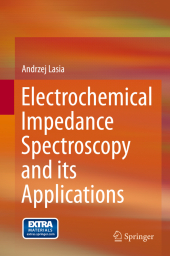 Neuerscheinungen 2014Stand: 2020-02-01 |
Schnellsuche
ISBN/Stichwort/Autor
|
Herderstra▀e 10
10625 Berlin
Tel.: 030 315 714 16
Fax 030 315 714 14
info@buchspektrum.de |

Andrzej Lasia
Electrochemical Impedance Spectroscopy and its Applications
With online files/update. Book w. online files/update
2014. xiii, 367 S. 176 SW-Abb., 48 Farbabb., 40 Tabellen. 23,5 cm
Verlag/Jahr: SPRINGER, BERLIN 2014
ISBN: 1-461-48932-6 (1461489326)
Neue ISBN: 978-1-461-48932-0 (9781461489320)
Preis und Lieferzeit: Bitte klicken
This text for graduate students and researchers provides a fully up-to-date, inclusive overview of the powerful, and often misused, technique of EIS. With detailed graphics, examples, and practice problems, it shows how to apply EIS in the most effective way.
This book presents a complete overview of the powerful but often misused technique of Electrochemical Impedance Spectroscopy (EIS). The book presents a systematic and complete overview of EIS. The book carefully describes EIS and its application in studies of electrocatalytic reactions and other electrochemical processes of practical interest. This book is directed towards graduate students and researchers in Electrochemistry. Concepts are illustrated through detailed graphics and numerous examples. The book also includes practice problems. Additional materials and solutions are available online.
Introduction.- 1: Definition of Impedance and Impedance of Electrical Circuits.- 2: Definition of Impedance and Impedance of Electrical Circuits.- 3: Determination of Impedances.- 4: Impedance of the Faradaic Reactions in the Presence of Mass Transfer.- 5: Impedance of the Faradaic Reactions in the Presence of Adsorption.- 6: General Method of Obtaining Impedance of Complex Reactions.- 7: Electrocatalytic Reactions Involving Hydrogen.- 8: Dispersion of Impedances at Solid Electrodes.- 9: Impedance of Porous Electrodes.- 10: Semiconductors and Mott-Schottky Plots.- 11: Coatings and Paints.- 12: Self-Assembled Monolayers, Biological Membranes, and Biosensors.- 13: Conditions for Obtaining Good Impedances.- 14: Modeling of Experimental Data.- 15: Nonlinear Impedances (Higher Harmonics).- 16: Instrumental Limitations.- 17:
Andrzej Lasia obtained his PhD at the University of Warsaw in 1975. He continued to work at the University of Warsaw until 1982. In 1975-1976, and 1982-1983, he worked as a research associate at the University of Guelph, Ontario, Canada. Since 1983, Lasia has worked at the UniversitÚ de Sherbrooke. Since his retirement in 2012, Lasia has continued to work at UniversitÚ de Sherbrooke as an Associate Professor. Lasia┤s main scientific interests are in the area of electrode kinetics, electrocatalysis, and electrochemical impedance spectroscopy. He is the author of over 150 articles in scientific journals.


